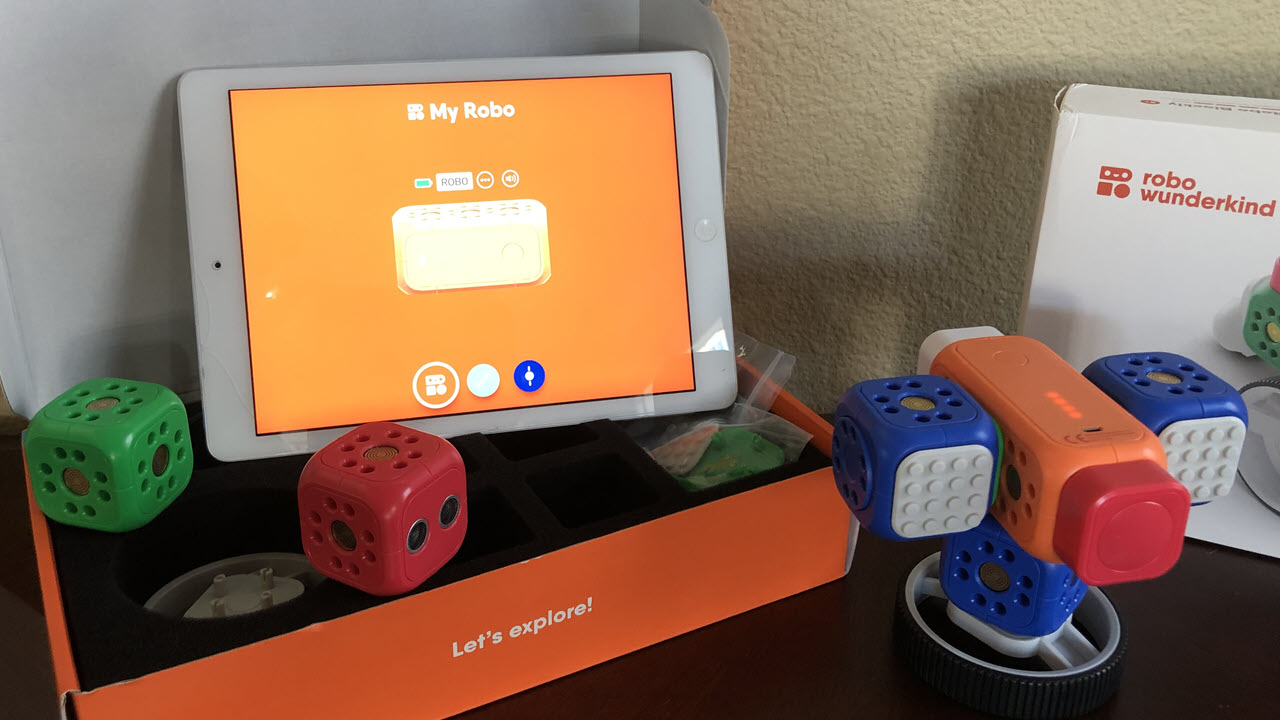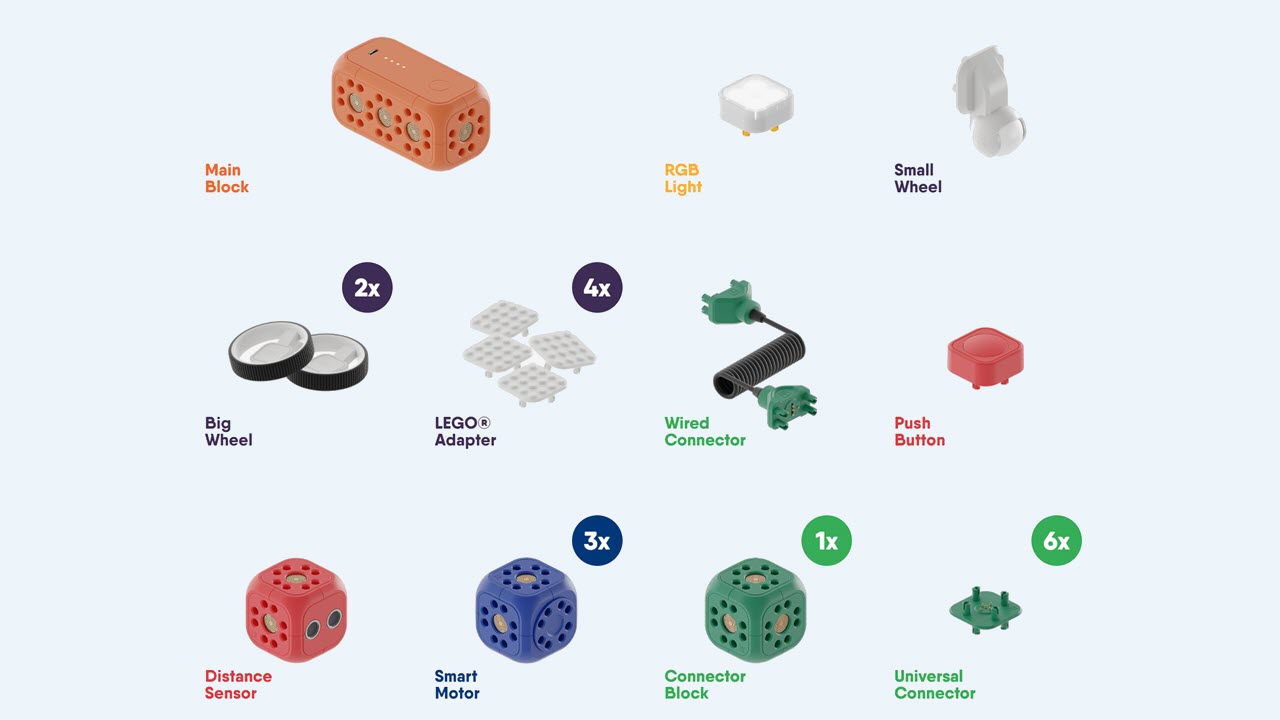Tom's Hardware Verdict
Robo Wunderkind is an ideal learning platform to introduce kids to the world of robotics. Its design is simple enough for even preschoolers to dive in to and start building robots out-of-the-box, yet also versatile enough to expand to more advanced explorations by leveraging the built-in apps and learning to manipulate and control their creations through coding.
Pros
- +
Modular platform makes learning easy for kids of any age
- +
Progressive and easy-to-follow coding apps
- +
Tons of tutorials
- +
Add ons available to expand to more projects
Cons
- -
Short battery life
- -
Awkward power button location
- -
Cost
Why you can trust Tom's Hardware
Remember the first robot you built as a child? The excitement of learning what each component does, how each piece fit together and the accomplishment you felt when you got things to work the way you imagined it to? Robo Wunderkind has created a learning platform to make a child’s first experience in robotics unique and memorable by providing building blocks of learning, both in the physical and metaphorical sense.
Some toy manufacturers sell robot kits that already look like robots to begin with and some others offer kits that contain over a hundred different pieces. Robo Wunderkind took the opposite approach here by breaking its design down to simple blocks, each with its own specific function --- keeping things uncomplicated for young minds. This method allows for boundless opportunities of imagination, creativity, problem-solving and self-expression. It also equates to hours upon hours of fun and learning, which is what it’s all about.
Because of its simplicity and the nature of its design, the Robo Wunderkind offers more versatility and diverse types of play activities compared to other robot kits that are already formed as an actual robot, car or character. You can reinvent Robo Wunderkind into anything - from creating a robotic dog that will follow you around one day, to a tower that will fire laser shots the next, to programming it to write your name. While the Robo Wunderkind robotic kit claims to target kids 5 and up, it is so simple it could also appeal to even younger groups who are already interested in building things.
Each play or learning session can be totally different based on what project the child wishes to create. Kids can start from scratch the next time they play, or can recreate previous projects, building it faster because the process has become familiar already. They can even add new functionalities like lights or sounds as they become more confident and creative. So each child can begin with simple creations and expand as they build more complex robots. If your kit does not include a particular module or sensor, you can easily purchase extra ones and add them to customize your set.
All this fun comes at a cost though. Ranging from $199 (for the basic set) to $399 (for the top model), the pricing on the Robo Wunderkind is definitely in the high-end spectrum of stem-based robot kits.
Compared to other robotic kits in the same price point as our review unit (the Explorer Prime for $249), like the Sphero RVR for example, the Robo Wunderkind comes out ahead in terms of versatility and its accessibility to engage with younger age levels, but the Sphero is better when it came to advanced coding because it supports JavaScript and is compatible with Raspberry Pi, albeit targeting a higher age bracket. So, the cost value really depends on the type of learning and coding experience you want for your child.
Robo Wunderkind also has three levels of coding applications available - Robo Live, Robo Code, and Robo Blockly. They use proprietary block-based VPL (visual programming language) to guide and teach kids how to code. Depending on their skill level, the child can start from the very basic coding application and escalate to the next level at their own pace, and go all the way to Python programming.
Get Tom's Hardware's best news and in-depth reviews, straight to your inbox.
Robo Wunderkind Specifications
The Robo Wunderkind kit comes in three variants:
| Kit | Components Included | Price |
|---|---|---|
| Explorer Lite | 6x modules | $199 |
| 10x projects | ||
| Main Block, Distance Sensor, 2x Motor Sensor, RGB Light, Push Button, Wired Connector, 4x Universal Connector, 2x Big Wheel, Small Wheel, 4x Lego Adapter | ||
| Explorer Prime (our review unit) | 8x modules | $249 |
| 15x projects | ||
| Main Block, Distance Sensor, 3x Motor Sensor, RGB Light, Push Button, Wired Connector, 6x Universal Connector, 2x Big Wheel, Small Wheel, 4x Lego Adapter, Block Connector | ||
| Explorer Pro | 15x modules | $399 |
| 30x projects | ||
| Main Block, Distance Sensor, 3x Motor Sensor, 2x RGB Light, 2x Push Button, 2x Wired Connector, 9x Universal Connector, 2x Big Wheel, Small Wheel, 8x Lego Adapter, 2x Block Connector, LED Matrix, Light Sensor, Motion Sensor, Line Follower, 3-axis Accelerometer | ||
| Row 9 - Cell 0 | Row 9 - Cell 1 | Row 9 - Cell 2 |
| Extras | Additional Modules can be purchased separately | $5 - $45 |
| Compatibility | Any smartphone, tablet with Bluetooth Low Energy (BLE) support and has the following OS: | |
| · Apple iOS version 10.0 or higher | ||
| · Android version 4.4 or higher | ||
| · Windows 10 version or higher | ||
| · Amazon Fire OS version 5 or higher | Row 15 - Cell 2 |
Robo Wunderkind Setup
The Robo Wunderkind is composed of modules and connectors. The Main Block is a rectangular orange block that functions as the battery source, includes a built-in speaker, and houses the Bluetooth and Wi-Fi electronics. It serves as the body for whatever you build, supporting an infrastructure of various combinations of the modules and connectors listed below. A color-coding scheme helps identify the key function of the module or connector being used. A set of handy tools also comes with the kit to make pulling modules and connectors apart a snap.

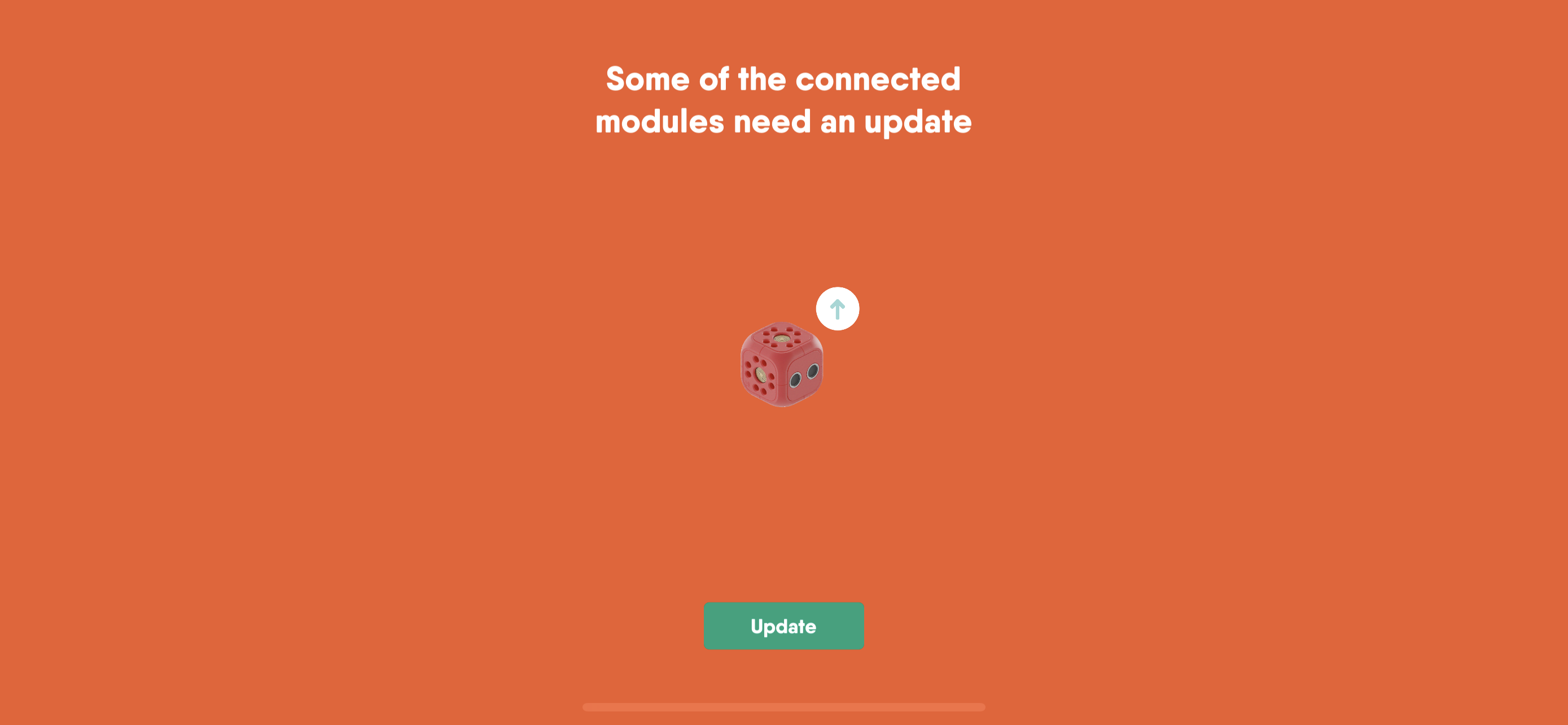

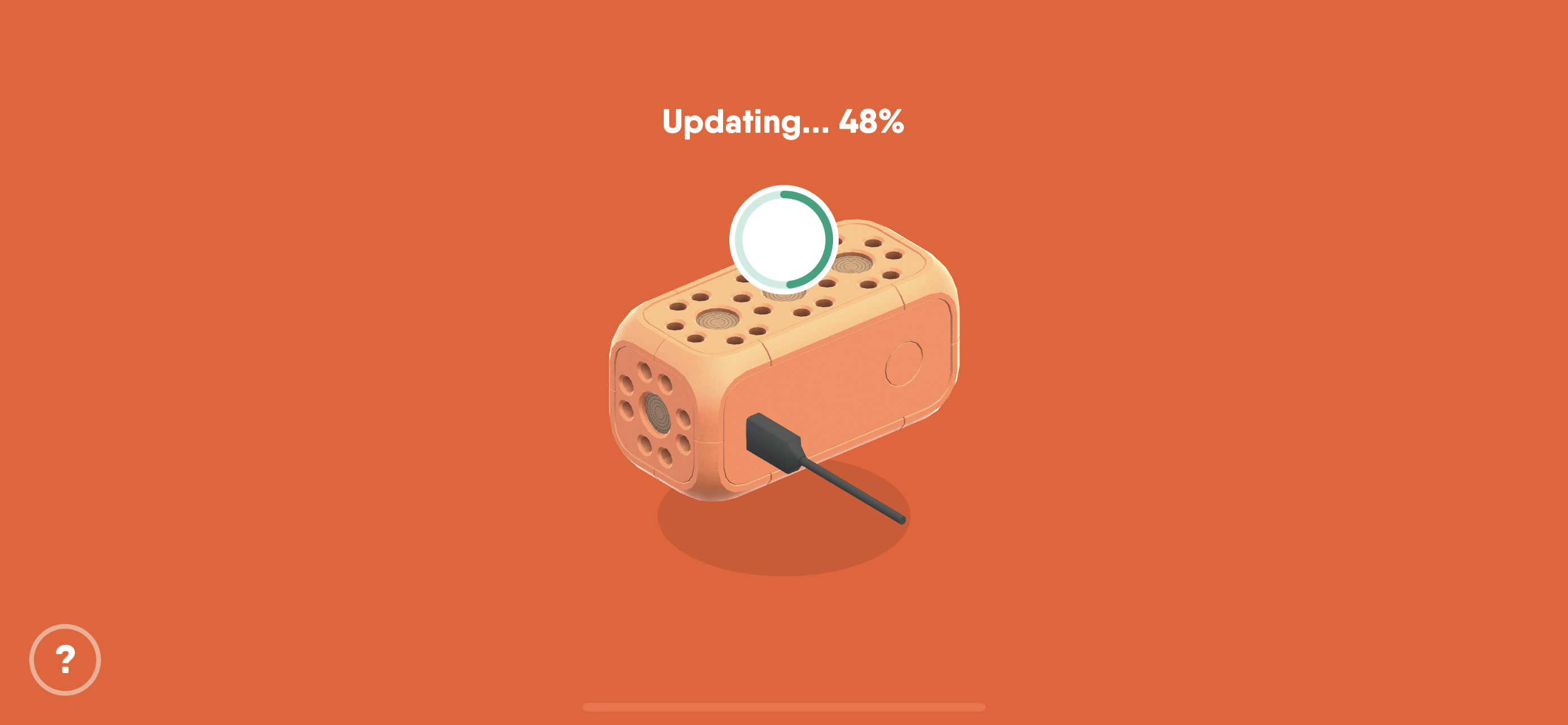
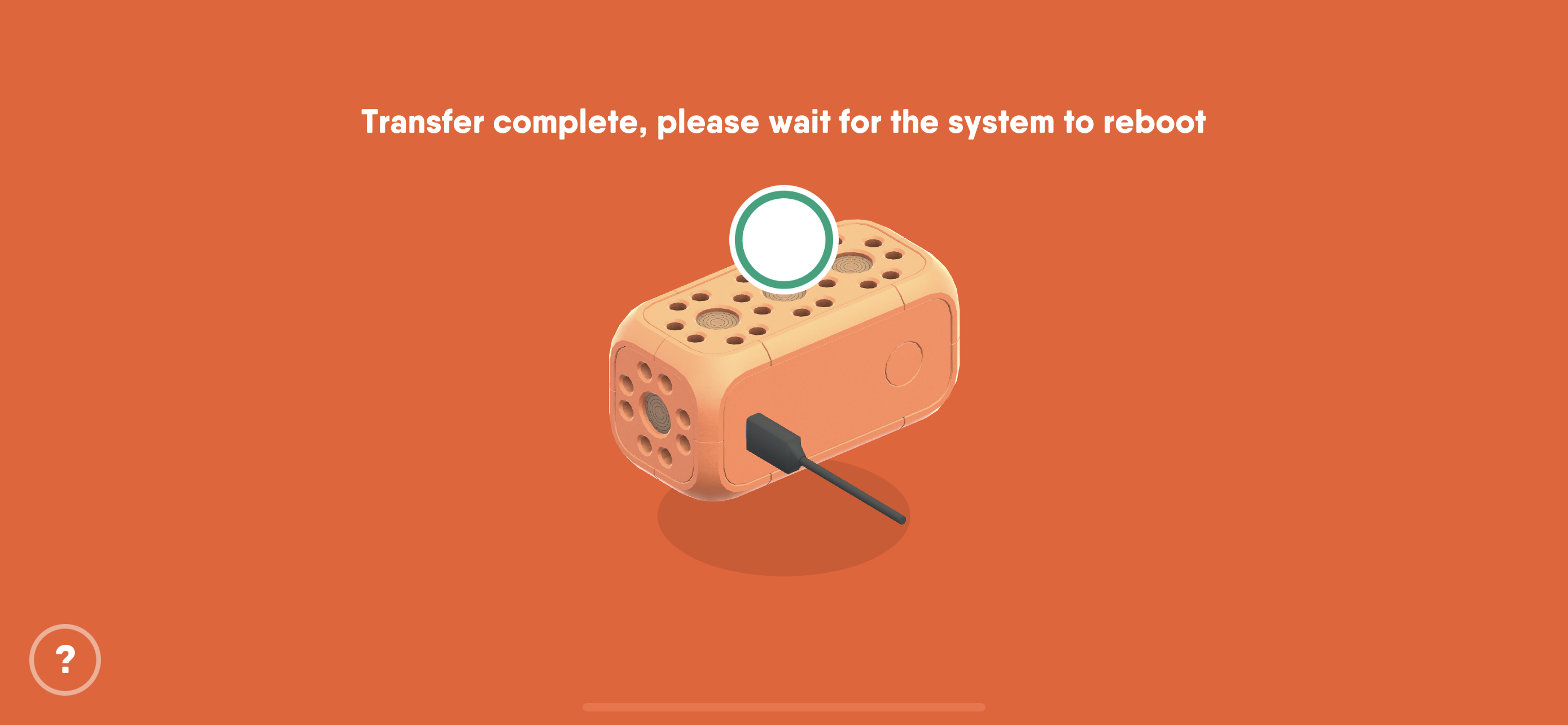
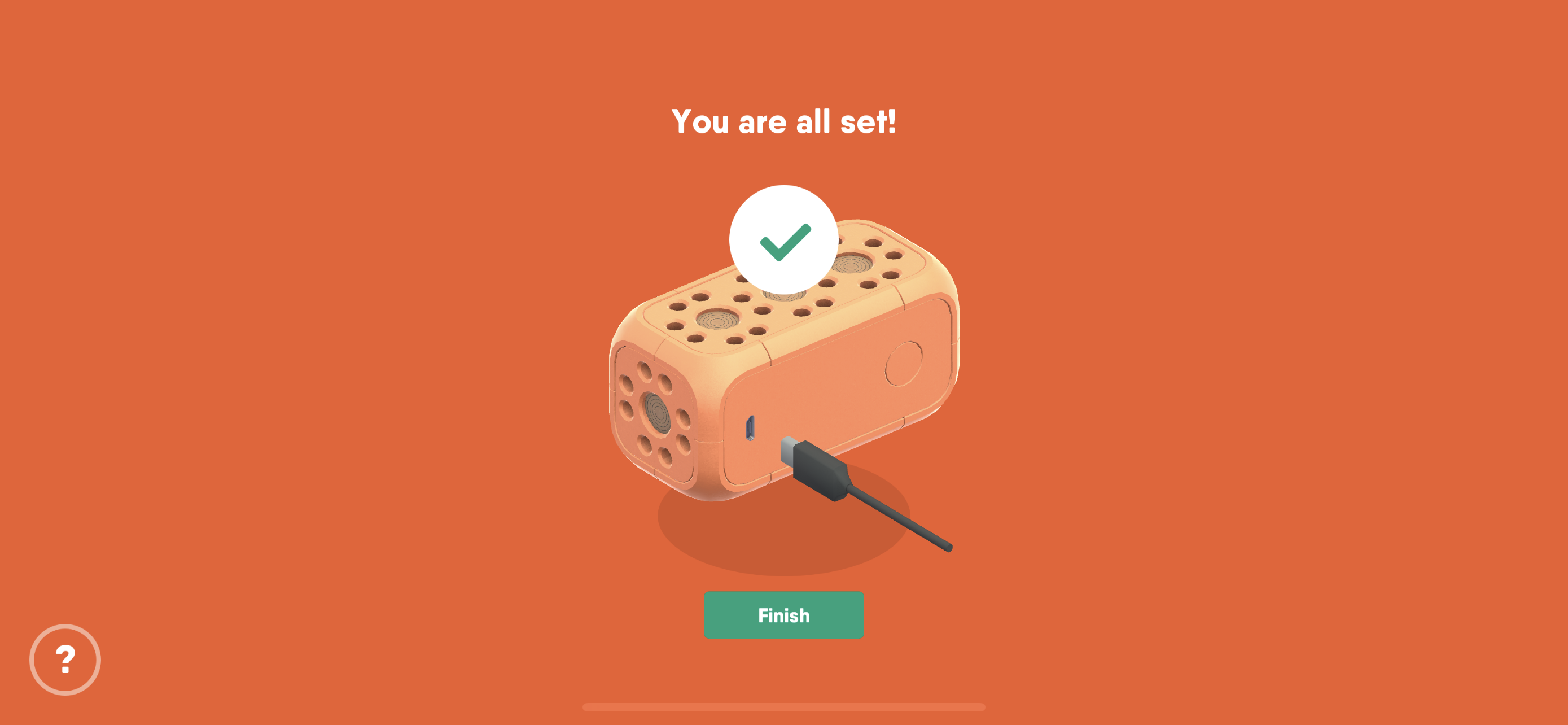

Similar to other STEM-based robotic kits, the Robo Wunderkind uses a built-in application that you download to your smartphone or tablet to remotely control your creation. To set up your Robo Wunderkind, first choose one of the three apps available and download. Then connect to your Main Block via Bluetooth. Once connected, the app will let you know whether you have enough charge. It will also detect if you have the latest firmware installed or prompt for updates. In addition to firmware located on the Main Block, many of the modules also contain upgradable firmware to support added functionality.
Robo Wunderkind Modules and Sensors
Our review kit included the following modules:
| Block Color: Function | Modules/Sensor: Description |
|---|---|
| Orange: Sound | Row 0 - Cell 1 |
| · Main Block (System+Sound): | |
| ESP32 Micro Controller, 2400 mAH lithium-ion battery (6 hours of playtime) with charging port, Bluetooth+Wi-Fi, built-in speaker and LED indicator | |
| Yellow: Light | |
| · RGB Light: | |
| 4x RGB LEDs, can display 16 million colors | |
| Blue: Motion | |
| · Smart Motor: | |
| Includes encoder, single rotating face featuring continuous rotation and ability to measure distance traveled | |
| Red: Sensors | |
| · Distance Sensor: | |
| Includes ultrasonic sensor with ability to measure distance to an obstacle | |
| · Push Button: | |
| Detects press action | |
| Green: Electrical | |
| · Connector Block: | |
| 6x connection faces for connecting up to 6 modules together | |
| · Universal Connector: | |
| Includes pogo pins and connection pegs, allowing blocks to connection mechanically and electrically | |
| · Wired Connector: | |
| Includes a coiled wire with 2 connectors sporting pogo pins and connection pegs, perfect for creating a flexible connection between blocks | |
| Grey: Mechanics | |
| · Big Wheel: | |
| Features grip tires and connection pegs; combine with the Smart Motor for motion projects, or use as a stable base for other creations | |
| · Small Wheel: | |
| An omnidirectional rotating sphere that provides support while driving | |
| · LEGO Adaptor: | |
| A plate with LEGO studs, providing a connection surface for LEGO and LEGO Duplo blocks - a great way to add robotics to your LEGO set | |
| · Disconnection Tool: | |
| Horseshoe tool with connector slots for disconnecting the universal connectors | |
| Row 30 - Cell 0 | Row 30 - Cell 1 |
| Some additional modules | (not included in our review unit) |
| Orange: Sound | |
| · Accelerometer: | |
| 3-Axis accelerometer that detects rotational and linear movement along 3 axes | |
| Yellow: Light | |
| · LED Display: | |
| 16x16 LED display for text, images and animation | |
| · Light Sensor: | |
| Includes a lens and light sensor for measuring light intensity | |
| Red: Sensors | |
| · Line Follower: | |
| Includes 3x IR sensors and can detect obstacles at a short distance as well as detect and follow a line | |
| · Motion Sensor: | |
| Includes a PIR (passive infrared) sensor that can detect the presence of a human or an animal |
Robo Wunderkind In Action
My 7-year-old daughter created some of the recommended projects, and it was easy enough for her to follow the instructions in the app and control the robots. In fact, she quickly understood the relationship between the color-coded Block Types in the Robo Code app and the modules. With experience already in Scratch and Minecraft Code Town, she didn’t take long to string together some code after assembling her first mobile robot and getting it moving about.
One setback though was the placement of the power button. She was constantly turning it off accidentally while plugging together her creations. This led to some frustration as she kept on starting over.
She also realized that too hard of an impact like ramming into a heavy object had the potential to send a module or two popping off. These are not robots you want to take into battle or to roll off high surfaces like a ramp. I guess that is where that distance sensor comes in most handy.
Another issue was battery life. While the battery claims 6-hours of playtime, we found this depends on what you are doing with your project. For simple projects like the Defense Tower, the charge lasted longer compared to more complex projects that required more blocks. Just keep in mind your mileage may vary and you may need to pause your play session to recharge.
Lastly, while the apps listed below are available for mobile phones, my daughter found that the best experience was on a tablet, especially when coding with Robo Blockly, mainly because of the screen size.
Robo Wunderkind Programming Apps
Here are the Robo Wunderkind programming apps available:

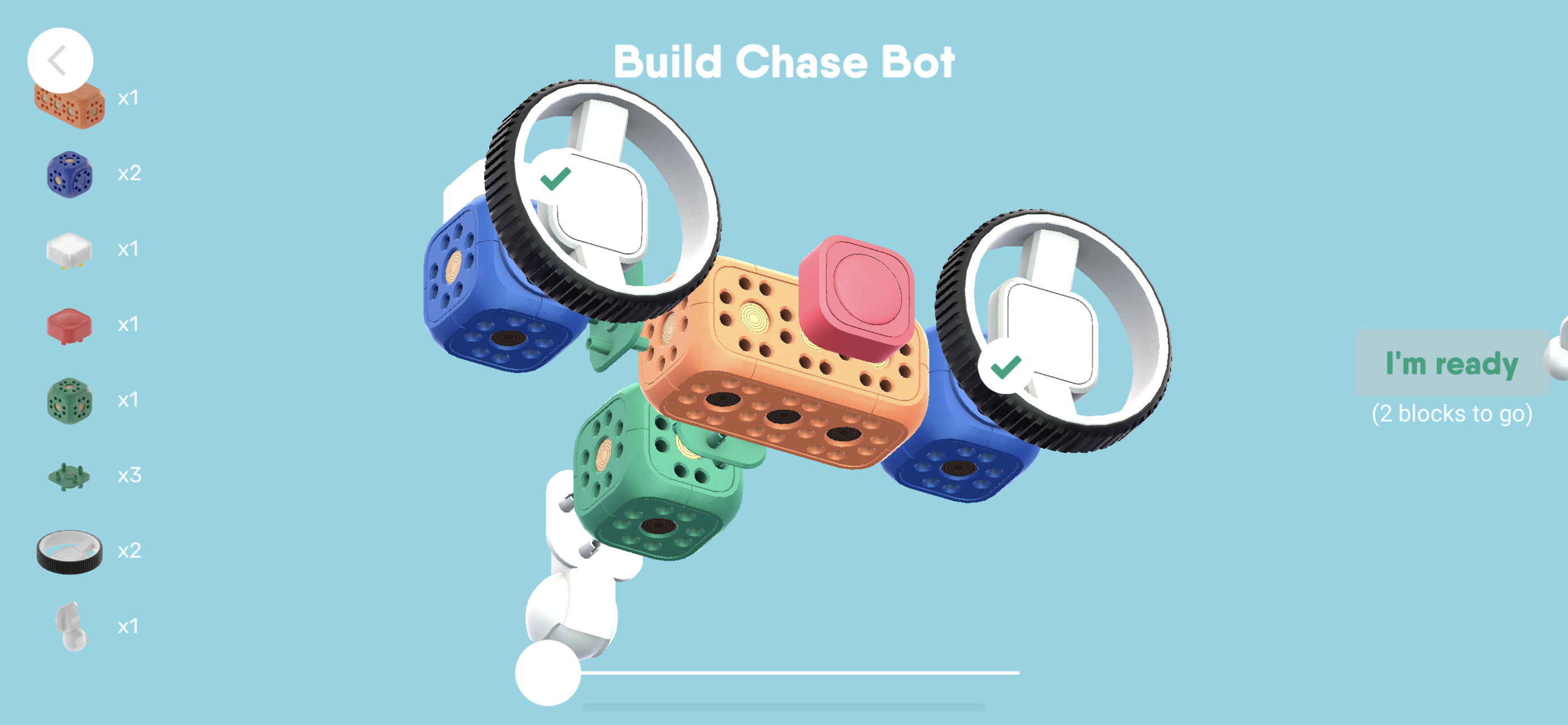
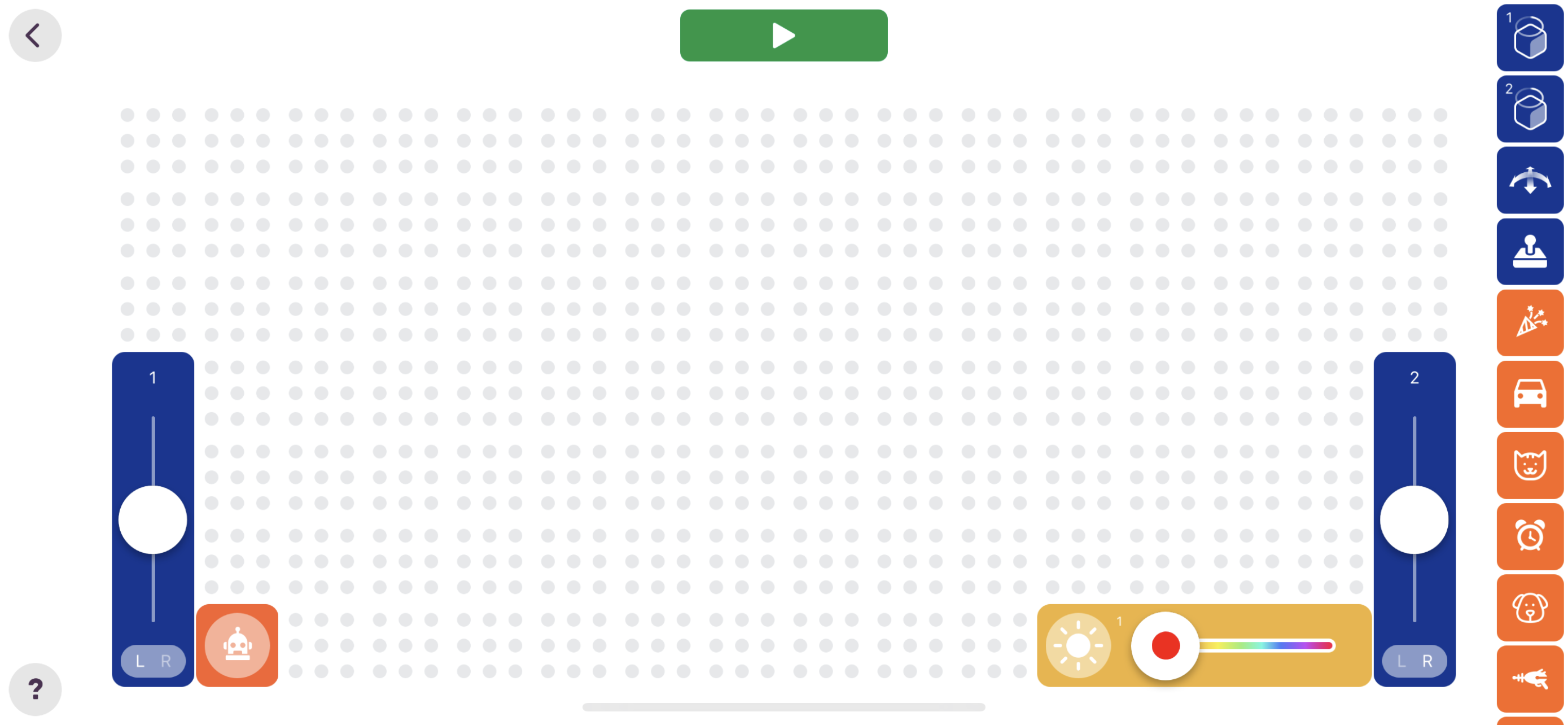
Robo Live - This app is geared toward beginner coders. It uses drag and drop icons to code and control the robot. You can build tutorial projects located in the Getting Started menu, including a Defense Tower, Car, Trike and Rover, and experiment with blocking your own actions out in the icon code editor, as well as power them using the app’s remote control. The My Robo screen keeps track of battery status, the name of the project or tutorial you’re working with and the modules currently connected to your Robo. An integrated link to the How-To guide can help you maximize your experience. You can start a project from scratch and save your designs and code to experiment with later.
Robo Code - This app is a step up from Robo Live, where new concepts such as states, actions and connections are introduced, but still using drag and drop icons. Similar to Robo Live, the My Robo and Getting Started tabs are available. The pre-programmed projects are a little more complex than Robo Live, with a focus on programming concepts. Robo Code’s My Projects includes a Coding Lab with all the same core controls as Robo Live. Kids will get familiar with programming concepts quickly as Robo Code uses Color Logic, the same functional category identifier for the modules, to show what code block does what. You can grab a yellow code block and pull it into your project to add light functions, for example. Kids can experiment with actions, lights and sounds, sequence programming and smart obstacle navigation.
Robo Blockly - This app uses an open-ended block-based programming language similar to the popular Scratch language. Aimed at advanced users, Robo Blockly is recommended for those who have spent some time in Robo Code and feel comfortable with complex code sets and projects. It features the familiar My Robo, Getting Started and Coding Lab tabs and includes 9 types of Code Blocks in the Coding Lab, which can control inputs/outputs such as Sounds (Orange), Motion (Blue), Visuals (Yellow) and Sensing (Red). Kids can then use Block Types like Events, Variables, Functions, Flow and Operators to create complete programs to manipulate their Robo.
With color-coding, the code is easy to read and update, needing just a click on a Block Type to edit values such as directional movement count, what type of sound to play, what color LED to flash and so on. Using Flow Blocks, you can repeat your favorite piece of code for as long as needed, useful for projects like a motion sensor and alarm system, or even a dancing robot that sings your favorite songs.
Robo Libs – If you’re familiar with the Python programming language, more advanced users can fetch the open-source Robo Python API or the Arduino Library written in C++. The Robo Python API features functions to manipulate your Robo modules such as Check Turn Action, Drive Forever, Get Robo Build, Stop All Actions, Blink RGB, Random Color, and a host of useful command-line queries to get information on your project’s build. Both APIs come with example code to get you started.
Bottom Line
Robo Wunderkind’s simple design and versatility make it a great fit for a younger audience who want to get into technology. It most definitely will create that spark of curiosity and promote fun learning. Compared to other STEM-based robotic kits in the market, the Robo Wunderkind may not be the cheapest one you can find, but if the price tag doesn’t bother you, it will be well worth your investment. That's especially true if you have or are thinking of giving the kti as a gift to young kids who are eager to tinker and learn the basics of coding. For older kids who are leaning towards more complex robot creations and coding experience, the UBTech Jimu robots are a great option, as is the STS Pi, which is a Raspberry Pi-powered robot.
It’s also worth noting that expanding your Robo Wunderkind set once you have it is not that expensive. Additional modules range from $5-$45 as of this writing, and grabbing one or two extra modules for your kit can add features and learning experiences well worth the money. Moreover, with a learning arc that can take a programming novice from object-based coding skills to creating complex robotics, this kit has the potential to be a long-lasting tool that won’t get discarded quickly due to boredom.

Anj Bryant is the Assistant Managing Editor at Tom's Hardware. She provides content layout and development support, and coordinates editorial initiatives for all the talented groups of freelancers, contributors, and editors in the team.

